Numbers in English can be a little tricky for learners, especially to write. Sure, in all of the languages that use the Latin alphabet, the digits are written the same. For example, the number 5 is the same in English and Spanish, but it is said differently and written out in letters differently. We created this article about how to say and write the numbers in English for anyone who struggles with this common part of the English language. It includes a free study guide that you can download and print out!
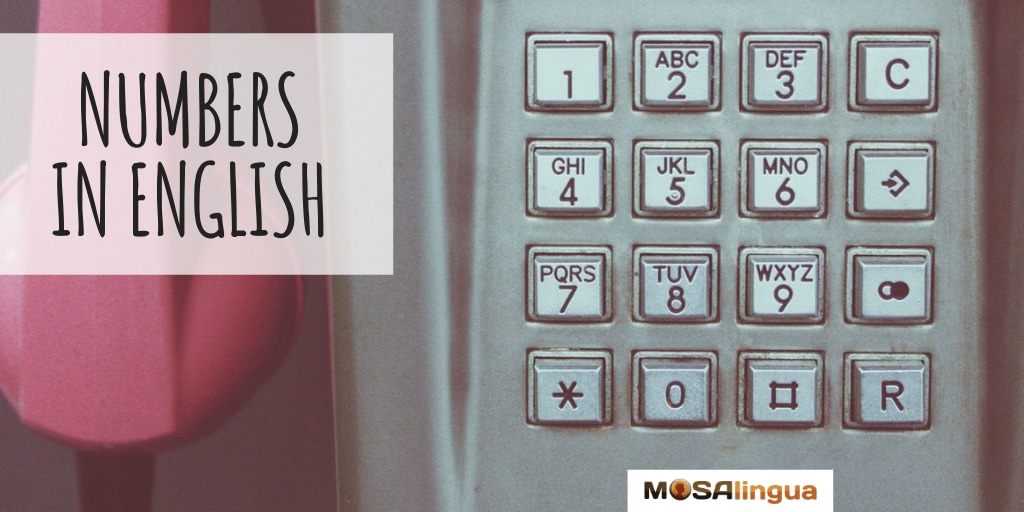
Numbers in English From 1 to 1 Billion: Basic Vocabulary
In this article, we’ll teach you how to say and write cardinal and ordinal numbers in English, from 1 to 1 billion! 3… 2… 1… go!
English numbers from 1 to 20
As the famous song from the musical, The Sound of Music, goes: “Let’s start at the very beginning, a very good place to start.”
- English numbers for kids: along with the colors and hello and goodbye, these are some of the first English words you should teach your kids.
- The numbers from 13 to 19 are formed with the suffix -teen.
From 1 to 10
- 1: one
- 2: two
- 3: three
- 4: four
- 5: five
- 6: six
- 7: seven
- 8: eight
- 9: nine
- 10: ten
MosaTip: When to write numbers in English as words — In formal writing, you should spell out numbers up to ten in letters, but any larger numbers can be written in digits.
From 10 to 20
- 10: ten
- 11: eleven
- 12: twelve
- 13: thirteen
- 14: fourteen
- 15: fifteen
- 16: sixteen
- 17: seventeen
- 18: eighteen
- 19: nineteen
- 20: twenty
MosaTip: Young people from 13 to 19 are called “teenagers” or “teens.” Can you see why?
Examples:
- He speaks four languages but he wants to learn at least three more.
- My two closest friends live in Spain.
- Four people were crossing the street at that time.
English numbers from 20 to 100
- Multiples of ten in English are formed adding [ty] to the root of the number.
- The word [hundred], except for when the number ends in 00, is always followed by [and]. It never has an s at the end unless you are talking about an unspecific amount, like “hundreds of fish.”
From 20 to 100
- 20: twenty
- 30: thirty
- 40: forty
- 50: fifty
- 60: sixty
- 70: seventy
- 80: eighty
- 90: ninety
- 100: one hundred
English numbers from 1 to 100
Let’s recap! Here is a list of the numbers from 1 to 100 in English. Feel free to print it out and use it as a cheat sheet!
English numbers from 100 to 999
To form numbers from 100 onwards, just combine what we mentioned above:
- For numbers between 100 and 199, it is common to say [a hundred] instead of [one hundred].
From 100 to 900
- 100: one hundred
- 200: two hundred
- 300: three hundred
- 400: four hundred
- 500: five hundred
- 600: six hundred
- 700: seven hundred
- 800: eight hundred
- 900: nine hundred
English numbers from one thousand to one million (1,000-1,000,000)
- The thousands, like the hundreds, are formed by adding the word [thousand/hundred] to the number right before the comma (,).
- As for the millions, the word [million] is added after the first number (remember: read the number from left to right). There are two commas in numbers in the millions (,).
From 1,000 to 1 million
- 1,000: one thousand
- 2,000: two thousand
- 3,000: three thousand
- 4,000: four thousand
- 5,000: five thousand
- 6,000: six thousand
- 7,000: seven thousand
- 8,000: eight thousand
- 9,000: nine thousand
- 1,000,000: one million
More English Numbers: Ordinal Numbers
- The ordinal numbers in English [first, second, third] are used to order things. They are normally used as determinants, that is, before the subject of the sentence.
- Example: This was the third exam she passed.
- They are also used to refer to dates, and there is an abbreviated form of each of them.
- Example: My birthday is November 3rd. When talking about dates, you can also add the word [the], like this: [the third of November].
- The abbreviations of cardinal numbers as follows. Notice that only the first three are different—all the rest use “th”:
- first [e.g. 1st]
- second [e.g. 22nd]
- third [e.g. 23rd]
- fourth [e.g. 24th]
- fifth [e.g. 25th]
- sixth [e.g. 26th]
- seventh [e.g. 27th]
- eighth [e.g. 28th]
- ninth [e.g. 29th]
More English Numbers: Fractions
- To refer to fractions in English, use the cardinal number for the numerator and the ordinal number for the denominator.
- Example: 1/3 would be [one third]
- When the numerator is greater than 1, the denominator has to be in the plural form. Therefore, you need to add an s at the end.
- Example: 5/6 would be [five sixths].
- The only exception is 2, which is expressed as [half] when the numerator is 1 (ex. ½ is one half) and [halves] when it is greater than 1 (ex. 3/2 would be three halves).
How to Pronounce English Numbers (VIDEO)
Now, if that all seems a little complicated, Abbe will explain everything you need to know about the numbers in English and how to pronounce them in the video below. You can also watch it on our YouTube channel. Repeat each number out loud after Abbe to practice your pronunciation. That’s called shadowing; read this article to learn more about the shadowing technique.
She also covers some important ways to use numbers: percentages, fractions, the number zero, and more.
Subscribe to our YouTube channel for more videos like this one.
How to Write Numbers in English
Number conventions are different in every language, and it’s important to get them right. This is a slightly more advanced topic, so if you’re a beginner you can stick to learning the basic numbers above.
Decimals in English
- To write them, use a period (.) to separate the whole number from the rest. (Be careful, your native language might use a comma (,) instead, but in English we can only use a period.)
- To say the number, use the word [point] and, right after, the decimal number.
- Be careful: the number zero is usually omitted in spoken English.
- Example: 0.5 would be [point five].
Percentages in English
- First, write the number followed by the percent symbol (%). To put it in words, it’s easy. Just use the word [percent].
- Example: 33% is [thirty-three percent].
English expressions with decimals and percentages: “99.9% (ninety-nine point nine percent)” — almost certain, almost always, almost completely. For example, “I am 99.9% sure I locked the car,” you are nearly certain that you locked the car.
Prices in English
- To talk about money, first say the full dollar amount, then the name of the currency. Be sure to make the currency plural if you are talking about more than one: dollars, pounds, euros, rupees, etc. If there are cents, they go at the very end. You can also shorten it when it’s clear what currency you’re talking about, as in the second part of the example below. Say the dollar amount then the cents amount, with nothing in between.
- Example: $12.66 would be [twelve dollars and sixty-six cents] or [twelve sixty-six].
- Someone might ask for change using the name of the coin instead of the amount of cents. Therefore, it’s worth knowing the common coins in US currency:
- 1¢ = one cent = a penny
- 5¢ = five cents = a nickel
- 10¢ = ten cents = a dime
- 25¢ = twenty-five cents = a quarter
English expressions with currency: “to put in one’s two cents” — to provide your opinion, usually when no one asked for it.
How to say 0 in English
Next, there are different words for the number zero depending on the use. They are the following:
- Oh for digits (e.g. phone numbers, door codes).
- Example: 57640 would be [five-seven-six-four-oh]
- Zero for measurements (e.g. temperature).
- Example: -7º would be [seven degrees below zero]
- Nil for sports scores, especially in British English. Americans might call this “zip,” but it is quite informal.
- Example: 35 – 0 is [the match ended thirty-five – nil]
Listen
Don’t forget that you can also listen to this article on our MosaLingua Language Lab podcast:
Listen to “#7 – Numbers In English” on Spreaker.
BONUS: Telling Time in English
Telling time and talking about the date in English are other useful skills to have. They also deal with numbers, but they are a bit particular. Watch Abbe’s video to learn how to use the English numbers you just learned to make an appointment or give someone the time.
We hope this article about numbers has helped clear up English numbers and how to use them in different situations! Have a look at our selection of free resources for English learners and our free app to learn English to start memorizing these numbers and learning how to use them in conversation.
If you’re learning other languages:
- Memorize key Spanish vocabulary, including numbers
- Learn the numbers in German
- Find out how to say more than un, deux, trois in French
- Learn how to count in Italian
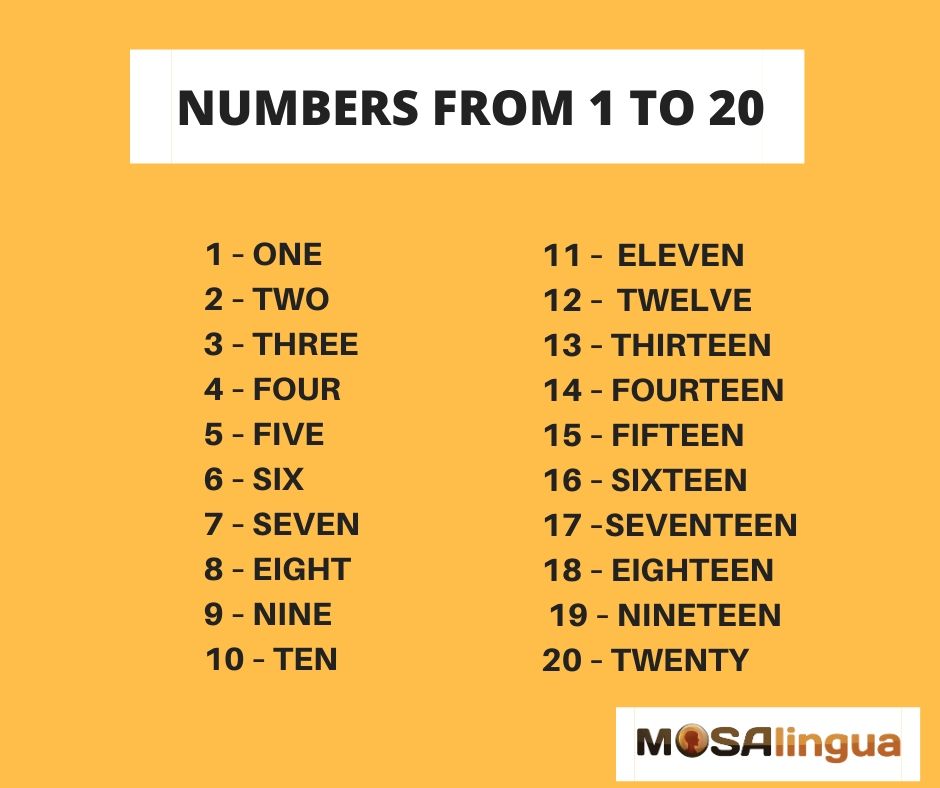
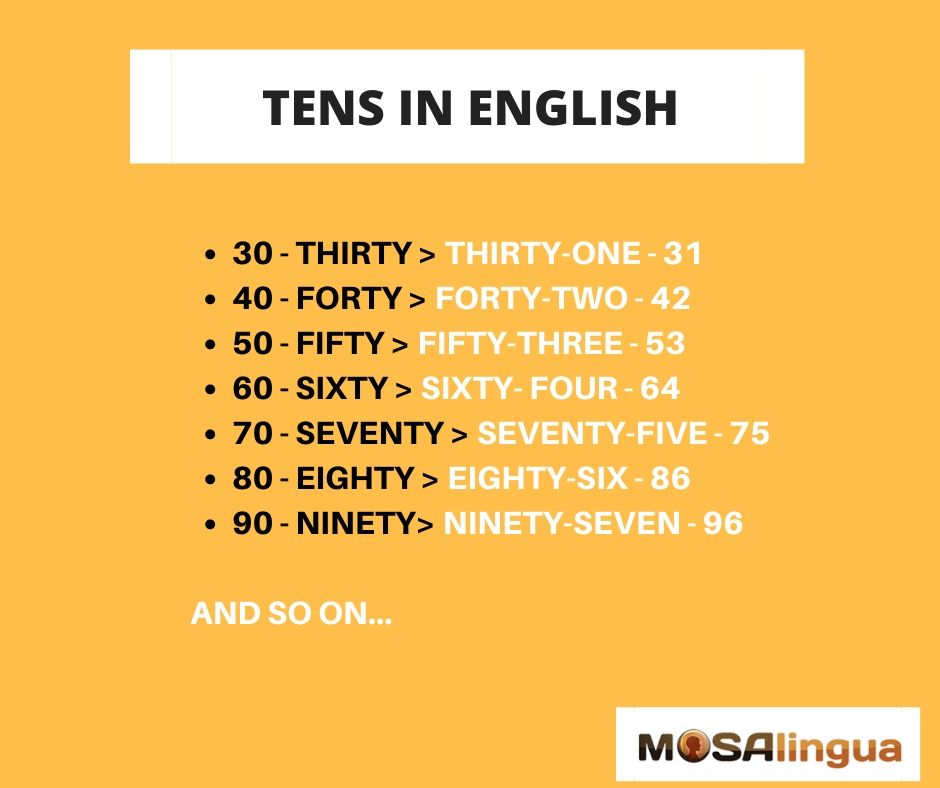
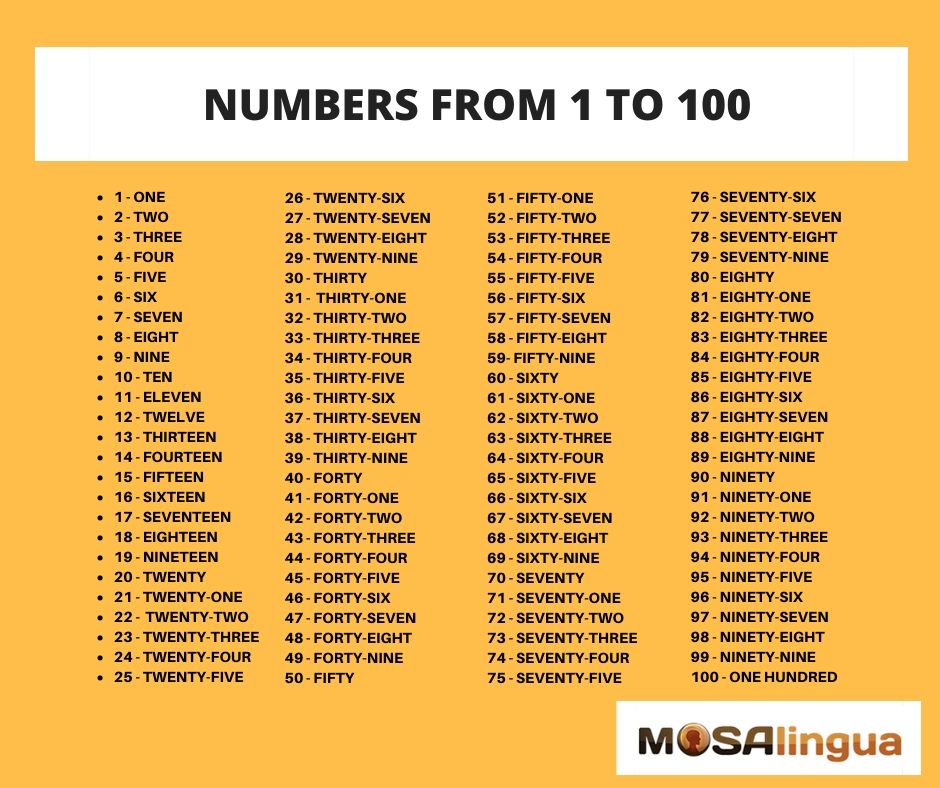
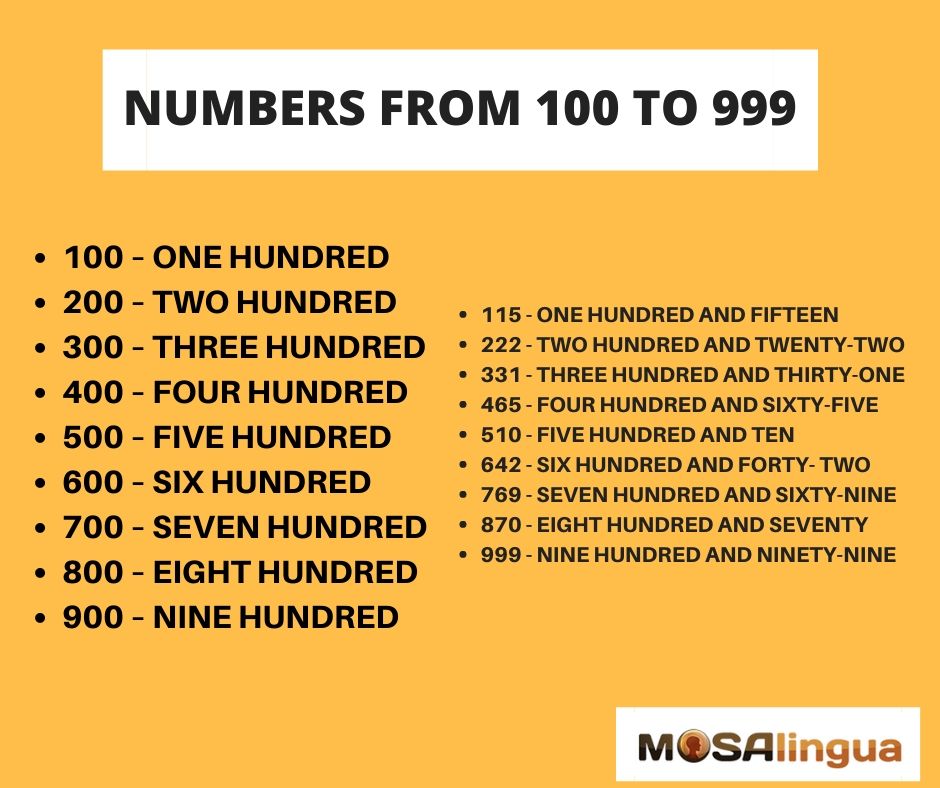
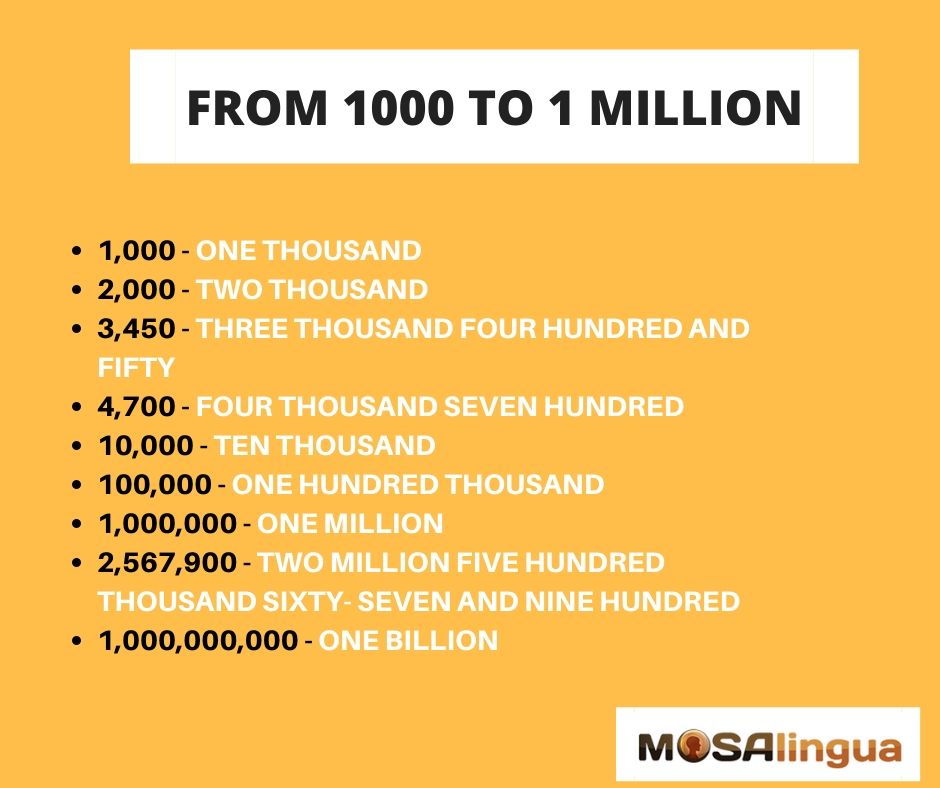
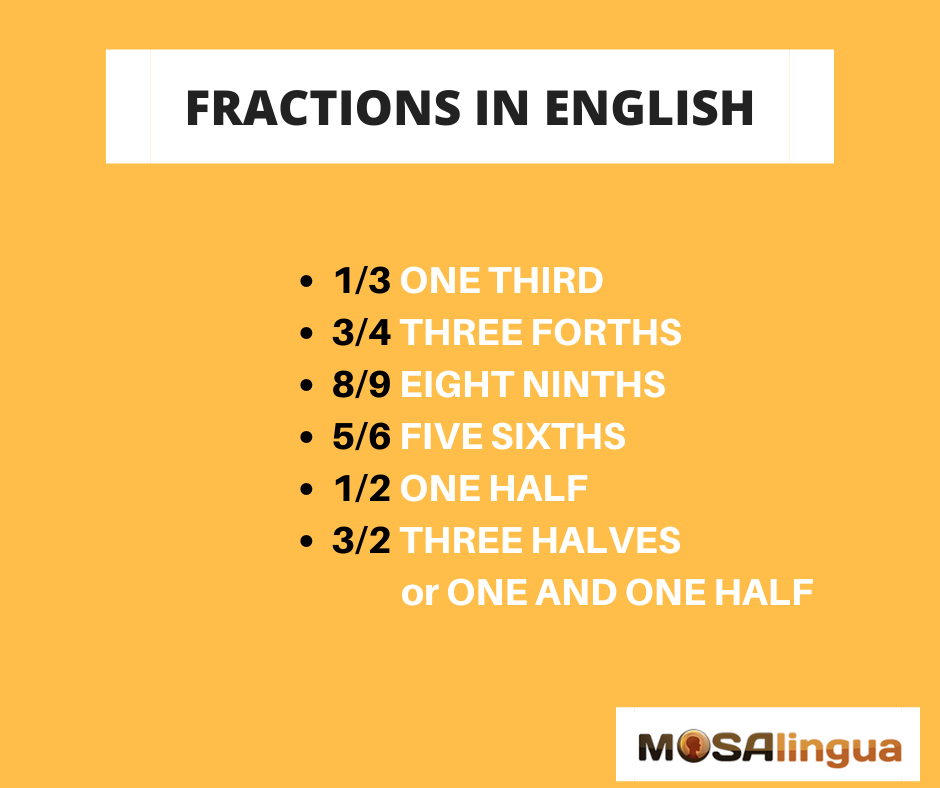




Comments